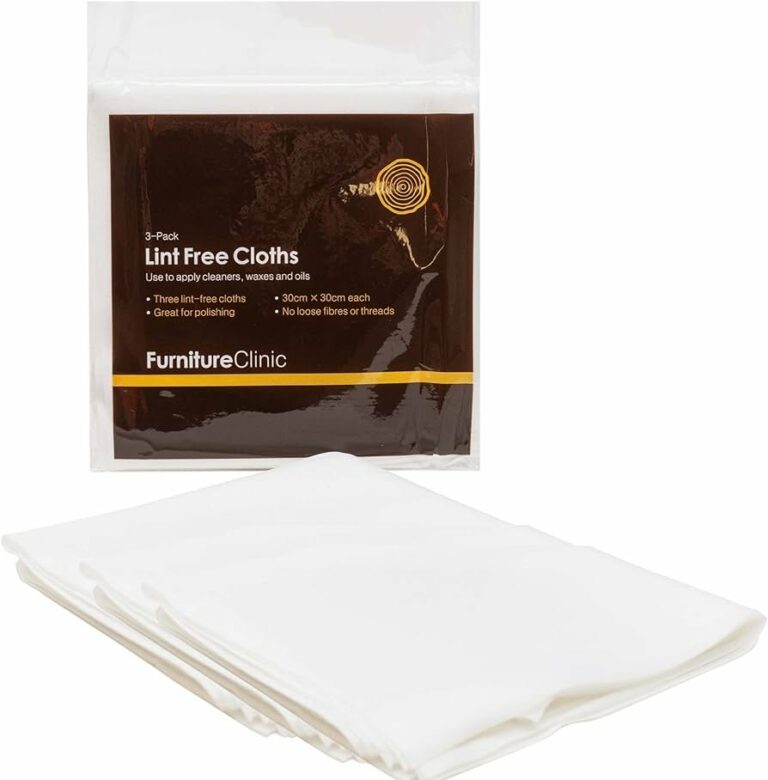Choosing Eco-Friendly Furniture For Your Home
Looking to create an Eco-Friendly Furniture For Your Home? Wondering how to choose the right eco-friendly furniture for your space? You’re in the right place! Making sustainable choices for your furniture not only benefits the planet but also enhances the overall aesthetic and ambiance of your living space. In this article, we’ll explore some practical tips to help you navigate the world of eco-friendly furniture and make informed decisions. So, let’s dive in and discover how to choose the right eco-friendly furniture for your home!
Eco-Friendly Furniture For Your Home:
Choosing eco-friendly furniture for your home is not only a responsible choice but also a great way to contribute to a sustainable future. With countless options available on the market, it can be overwhelming to navigate through the choices and find the right ones for your space. In this article, we will guide you through the process of selecting eco-friendly furniture that aligns with your style, budget, and environmental values. From materials to certifications, we will cover everything you need to know to make an informed decision.
Understand the Concept of Eco-Friendly Furniture
To choose the right eco-friendly furniture, it’s essential to understand what makes a piece environmentally friendly. Eco-friendly furniture refers to products that are made using sustainable materials, manufactured and transported with minimal environmental impact, and designed for longevity and recyclability. By opting for eco-friendly furniture, you’re supporting sustainable practices while reducing your carbon footprint.
Sustainable Materials
When it comes to eco-friendly furniture, the choice of materials is crucial. Look for furniture made from sustainable materials such as:
- Bamboo: A fast-growing and renewable resource.
- Reclaimed Wood: Salvaged from old buildings or furniture, reducing the need for new materials.
- Recycled Plastic: Furniture made from recycled plastic helps reduce plastic waste.
- Organic Fabrics: Choose upholstery made from organic cotton, hemp, or linen.
- FSC-Certified Wood: Wood sourced from responsibly managed forests certified by the Forest Stewardship Council.
Non-toxic Finishes
In addition to sustainable materials, ensure that the furniture uses non-toxic finishes. Avoid furniture treated with harmful chemicals, such as formaldehyde or volatile organic compounds (VOCs). Look for furniture that is finished with natural, water-based, or low-VOC finishes.
Consider the Lifecycle of the Furniture
To truly embrace sustainability, it’s essential to consider the entire lifecycle of the furniture. This involves evaluating how the furniture is manufactured, transported, used, and disposed of.
Sustainable Manufacturing
Choose furniture from manufacturers that prioritize sustainable manufacturing practices. Look for companies that promote energy-efficient production methods, waste reduction, and ethical labor practices. Some manufacturers even use renewable energy sources to power their factories.
Minimal Packaging and Transportation Impact
Consider the packaging and transportation impact of the furniture you choose. Opt for furniture that is packaged using minimal and recyclable materials. Additionally, selecting furniture that is locally produced can significantly reduce the carbon emissions associated with transportation.
Durability and Repairability
Investing in durable and repairable furniture is an essential aspect of sustainability. Look for well-built pieces that can withstand the test of time. Furniture with replaceable parts and accessible repair options ensures that you can extend its lifespan, reducing the need for replacements.
End-of-Life Disposal
Consider what will happen to the furniture when it reaches the end of its life. Choose furniture that is designed for easy disassembly and recycling. Look for companies that offer take-back programs or information on how to responsibly dispose of their products.
Look for Certifications and Labels
Certifications and labels can help you navigate through the sea of eco-friendly furniture options. Look for the following certifications and labels to ensure that your furniture meets specific environmental standards:
Forest Stewardship Council (FSC) Certification
The Forest Stewardship Council certification ensures that wood products come from responsibly managed forests. Look for furniture with FSC-certified wood to support sustainable forestry practices.
GREENGUARD Certification
The GREENGUARD certification guarantees that furniture meets strict chemical emissions limits, promoting healthier indoor air quality. This certification is particularly important when choosing upholstered furniture.
Cradle to Cradle Certification
The Cradle to Cradle certification focuses on the entire lifecycle of a product, including material health, recyclability, and renewable energy sourcing. Look for this certification to ensure a high level of sustainability.
Global Organic Textile Standard (GOTS)
When choosing upholstered furniture, look for the Global Organic Textile Standard (GOTS) certification for organic fabrics. This certification ensures that textiles are made with organic fibers and meet strict environmental and social criteria.
Evaluate the Manufacturer’s Sustainability Practices
The sustainability practices of the furniture manufacturer can provide valuable insight into the overall environmental impact of the product. Consider the following factors when evaluating the manufacturer’s practices:
Use of Renewable Energy
Look for manufacturers that utilize renewable energy sources to power their operations. This helps reduce greenhouse gas emissions and reliance on fossil fuels.
Waste Management
Consider manufacturers that prioritize waste reduction and recycling. Look for companies that have implemented recycling programs or use recycled materials in their production processes.
Ethical Labor Practices
Support companies that ensure fair wages and safe working conditions for their employees. Look for certifications such as Fair Trade or B Corporation to verify the manufacturer’s commitment to ethical labor practices.
Seek Recommendations and Read Reviews
Before making a purchase, seek recommendations from friends, family, and online communities. Reading reviews can provide valuable insights into the quality, durability, and sustainability of the furniture you are considering. Look for reviews that specifically mention the eco-friendly aspects of the product.
Consider Secondhand and Vintage Options
Choosing secondhand or vintage furniture is an excellent way to reduce waste and give existing pieces a new life. Explore thrift stores, flea markets, and online platforms to find unique and eco-friendly furniture options. Ensure that the used furniture meets the same sustainability criteria mentioned earlier.
Set a Budget and Prioritize
Setting a budget and prioritizing your needs can help you make informed choices. Remember that eco-friendly furniture may come with a higher price tag due to the sustainable practices involved. Consider which aspects, such as materials or certifications, are most important to you and allocate your budget accordingly.
Visit Sustainable Furniture Stores
To experience eco-friendly furniture firsthand, visit sustainable furniture stores in your area. These stores specialize in ethically sourced, environmentally friendly products. Take the time to explore different options, ask questions, and learn more about the sustainability initiatives of each brand.
DIY Eco-Friendly Furniture
If you’re feeling creative and up for a challenge, consider DIY eco-friendly furniture projects. Upcycling old furniture or repurposing materials can result in unique and sustainable pieces for your home. Explore online tutorials and guides for inspiration and step-by-step instructions.
Maintenance and Care
Once you have chosen your eco-friendly furniture, proper maintenance and care are essential to prolong its lifespan. Follow the manufacturer’s instructions for cleaning and maintenance to ensure that your furniture stays in good condition. Regular cleaning and preventative measures can help prevent damage and extend the life of your furniture.
How To Pick The Right Furniture For Your Home (My Design Process)
Frequently Asked Questions
What factors should I consider when choosing eco-friendly furniture?
When selecting eco-friendly furniture for your home, consider the materials used, such as sustainably sourced wood, natural fabrics, or recycled materials. Look for certifications like FSC or Cradle to Cradle, indicating that the furniture meets specific environmental standards. Additionally, check for non-toxic finishes and adhesives. Research the manufacturing process and what steps the company takes to minimize resource consumption and waste generation. Lastly, think about the furniture’s durability and whether it can be easily repaired or recycled at the end of its life.
How can I determine if a piece of furniture is made from sustainable materials?
To assess the sustainability of furniture materials, check for certifications like Forest Stewardship Council (FSC) certification, which ensures that the wood used comes from responsibly managed forests. Look for labels or descriptions mentioning the use of recycled materials or materials that have a low environmental impact. Avoid furniture made from rare or endangered wood species, as their sourcing contributes to deforestation.
Can I find eco-friendly furniture that suits my personal style?
Yes, you can find eco-friendly furniture that fits your personal style. Many sustainable furniture brands offer a wide range of designs to cater to different tastes. You can find options ranging from modern and minimalist to classic and rustic. Additionally, consider shopping from local artisans who specialize in creating unique and sustainable furniture pieces. With research and exploration, you can find eco-friendly furniture that matches your aesthetic preferences.
What are some eco-friendly furniture alternatives to consider?
If you want to explore eco-friendly furniture alternatives, consider options such as reclaimed or upcycled furniture, which repurposes old or discarded materials. Another option is vintage or second-hand furniture, as it promotes reuse and extends the lifespan of existing pieces. Additionally, you can opt for furniture made from materials like bamboo, cork, or recycled plastic, which offer sustainable alternatives to traditional materials.
How can I ensure the furniture I choose is eco-friendly throughout its lifecycle?
To ensure the eco-friendliness of furniture throughout its lifecycle, consider its durability and potential for repair. High-quality furniture that can withstand wear and tear is less likely to end up in a landfill. Look for furniture that can be easily disassembled, allowing for repairs or replacement of specific parts, rather than replacing the entire piece. Additionally, choose furniture that can be recycled or properly disposed of at the end of its life, reducing its environmental impact.
Final Thoughts
Choosing the right eco-friendly furniture for your home is essential for creating a sustainable living space. By considering factors such as materials, certifications, and manufacturing processes, you can make informed and environmentally conscious decisions. Look for furniture made from renewable materials like bamboo or reclaimed wood, and opt for items certified by recognized organizations such as FSC or GREENGUARD. Additionally, choose furniture that is locally produced to reduce carbon footprint. By following these guidelines, you can ensure that your furniture choices align with your eco-friendly values while creating a comfortable and stylish home environment.



